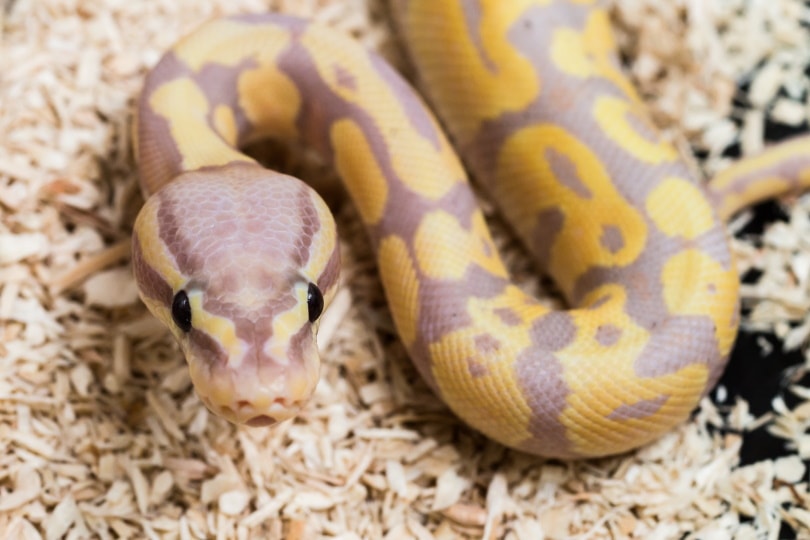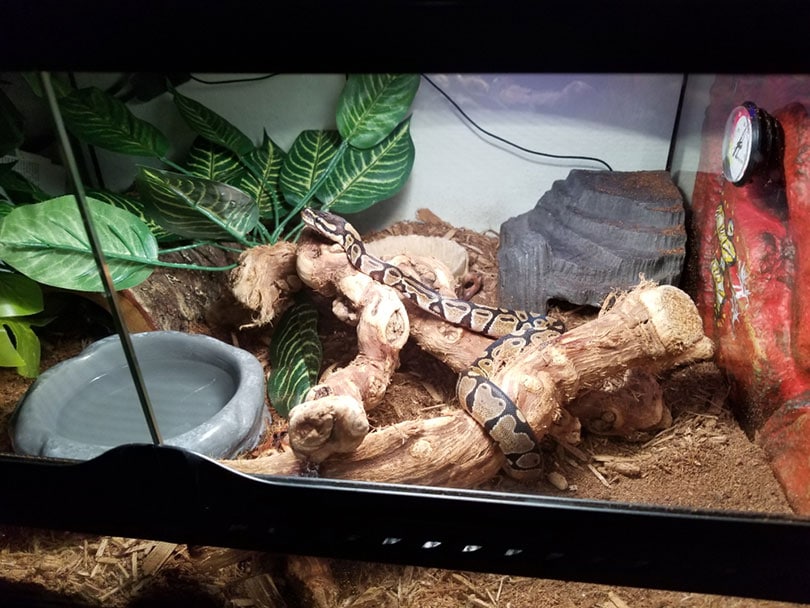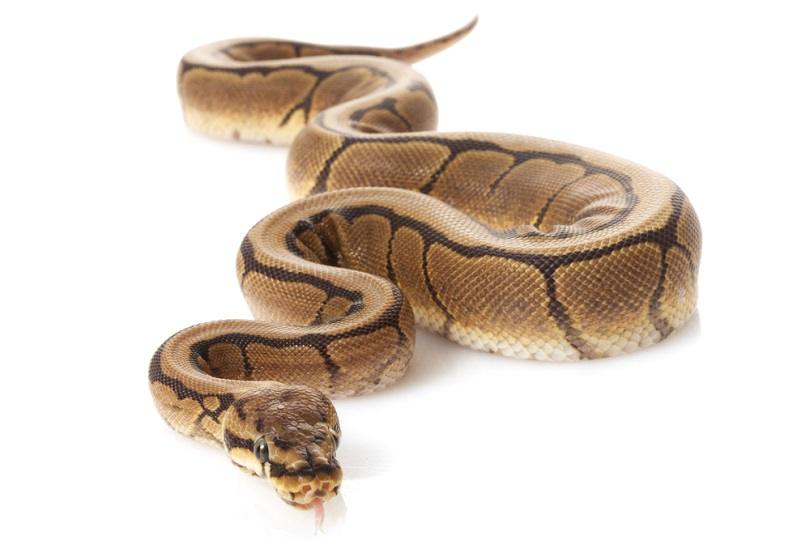
Ball pythons are among the most popular pet snakes for several reasons. Not only are they docile, easy to handle, reach an impressive but manageable size, and are a great snake for keepers of all experience levels, but they also come in many different color and pattern morphs.
When it comes to these unique morphs that are widely available throughout the pet trade, there is much to be learned. In this article, we’re going to talk about the uniquely patterned Spider Ball Python morph that has been in the hobby for quite some time. This particular morph is well-known and the topic of some controversy surrounding their genetics, so keep reading to learn more about them and how they came to be.
The 10 Spider Ball Python Morph Facts
1. The Spider Ball Python Is Among Thousands of Ball Python Morphs
The world of ball pythons is vast. They are incredibly popular pet snakes for many reasons, one being the amount of color and pattern morphs that have been created using various genetic mutations. At this point, there are thousands of different morphs that have been developed with selective breeding across the hobby with more being created all the time.
The price of morphs varies significantly from under $100 to $25,000 or more for a single snake. The price is dependent on how new the morph is, how rare or unique its characteristics are, and also the snake’s age, size, and if they are a proven breeder.
2. The First Spider Ball Python Was Imported from Africa
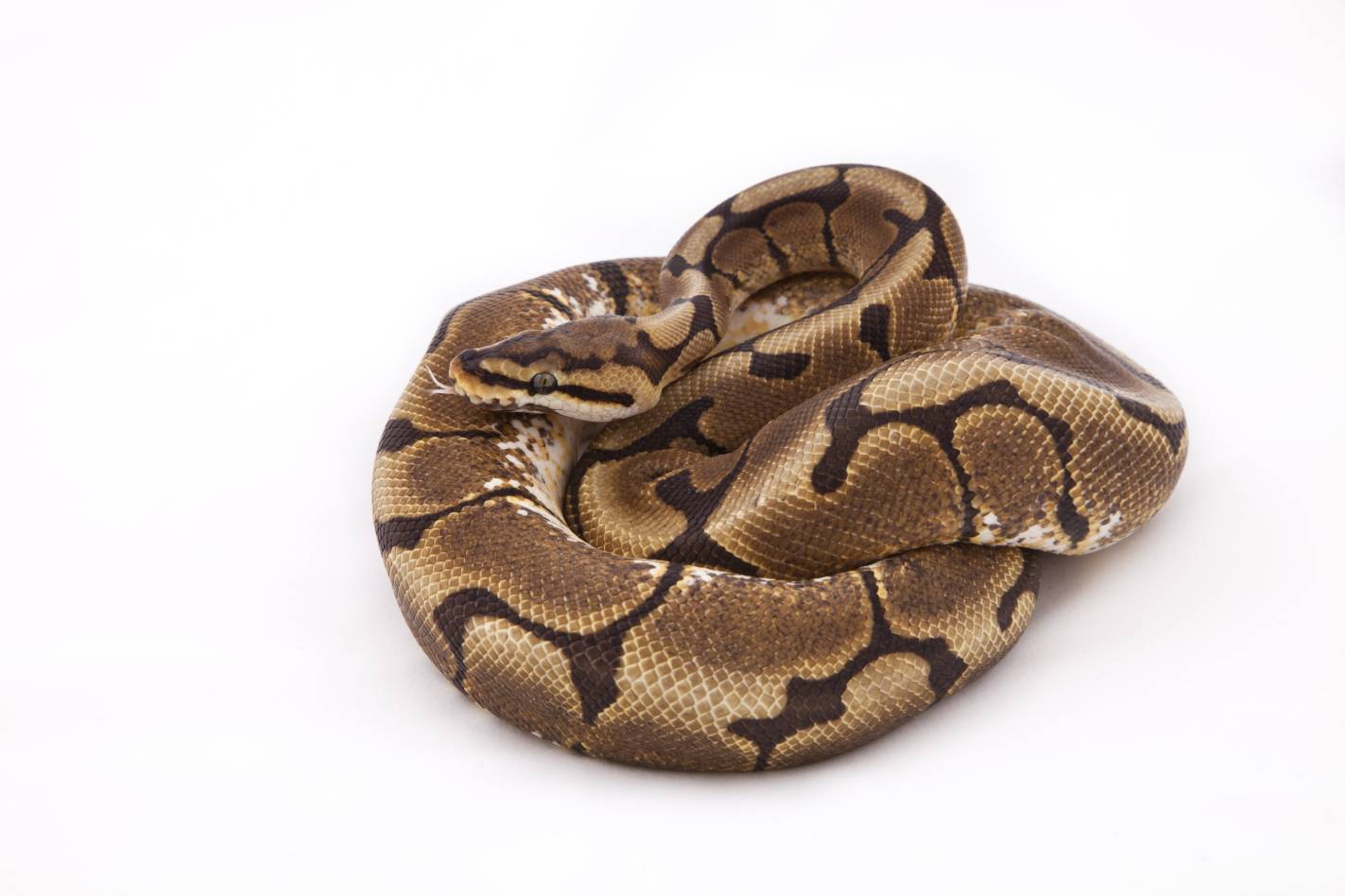
The very first Spider Ball Python ever recorded was imported from Africa by a pet store employee from Los Angeles, California. The unique snake lived with this person for over 2 years before being sold for $7,500 to breeder Lindy Johnson of Freedom Breeder. The snake was later sold to Kevin McCurley of New England Reptile Distributors.
3. The Spider Morph Was Introduced to the Reptile Hobby in 1999
The Spider morph was first bred in 1999 by New England Reptile Distributors. The successful pairing officially introduced Spider into the reptile hobby. These snakes went from being incredibly rare to incredibly common over the years. Many other morphs have been created using their unique genetic mutation and much has been learned in the years since the morph was first created.
4. They Have a Distinct Puzzle Pattern & a Unique Head Marking
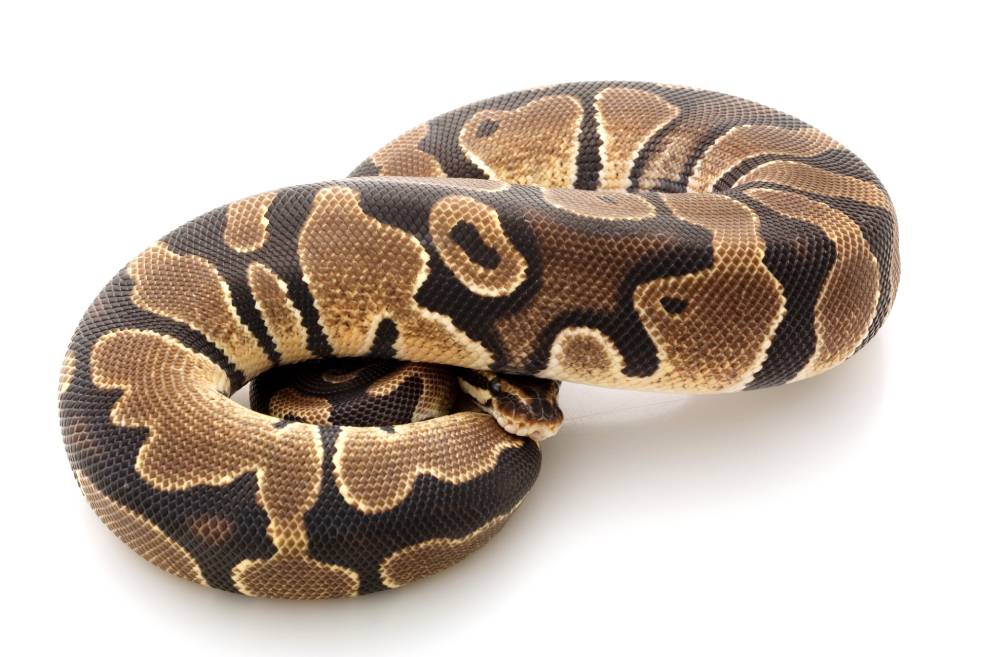
The Spider morph is characterized by the unique puzzle pattern that sets it apart from the pattern of your typical Ball Python. This thin black puzzle pattern is mostly unbroken and runs along the body from one side to the other.
Unlike normal Ball Pythons with large brown to golden blotches that are separated by thick, dark markings, the spiders have a much larger brown or golden pattern with very thin markings and a significant contrast of colors (often white to bright yellow) with splatter color along the edges of the body. They also often have lighter eyes compared to the normal’s dark iris.
The Spider morph is also popular for their “alien heads,” which refers to the head having bold markings with a dark spot on the crown that resembles the more classic depiction of an alien. Keep in mind that though there are various morphs that include the spider gene, the original Spider morph’s coloration is very similar to that of a normal Ball Python.
5. Spider Is Considered an Incomplete Dominant Mutation
Genetic mutations can be inherited differently. Many of the most common mutations are considered recessive; for example, albinism (albino) is a recessive trait. When a mutation is recessive, it means that the snake must receive a copy of the mutation from both parents to physically display the trait.
The Spider gene falls into the category of dominant mutations, which can be broken down into dominant, co-dominant, and incomplete dominant. With a dominant mutation, only one copy of the mutated gene from a single parent is needed to produce the desired appearance.
The world of Ball Python genetics goes pretty deep, but to put things simply in regard to the Spider’s incomplete dominant trait, if you breed a Spider morph to a normal Ball Python, a portion of the clutch will be Spider morphs.
6. The Spider Gene Has Been Used to Create Many Other Morphs
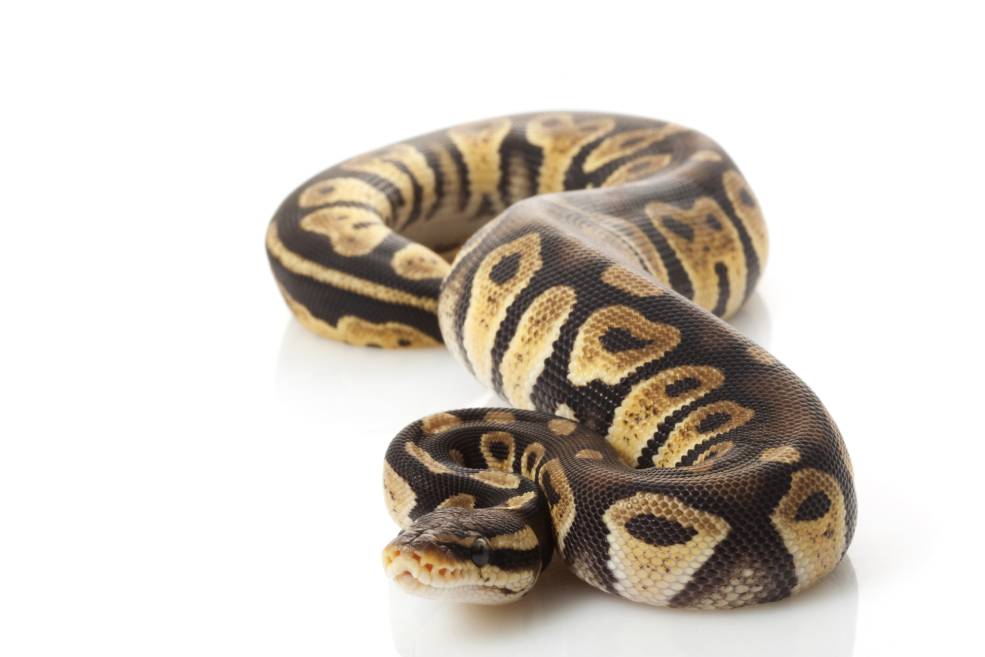
The unique appearance that results from the genetic mutation of the Spider morph quickly became a favorite among breeders and snake hobbyists. Naturally, these snakes were used in selective pairings to create a wide variety of other morphs.
There are too many Spider combinations to list, but some of the most well-known and popular morphs that resulted from the spider gene include:
7. The Spider Morph Has a Genetic Disorder
The genetic mutation responsible for a Spider morph’s patterning is directly related to a disorder of the central nervous system. This disorder causes their heads to twist and sway and is commonly called a “wobble.” This condition is present across all Spider morphs, though the severity of the condition varies by individual.
The wobble in some snakes may be so mild it is difficult to recognize, while in others the lack of motor control could be severe enough to impact their ability to strike and feed. It’s been determined that the Spider pattern and the wobble are linked and there is no way to cure the condition without completely removing the genetic mutation altogether.
Homozygous, or two copies of the same gene, which in the Ball Python world is referred to as “super,” is lethal for the Spider morph. If two Spider Ball Pythons are paired, 25% of the clutch would be a Super Spider morph, and there has yet to be a Super Spider that survived.
8. There Is Controversy Surrounding the Breeding of the Spider Morph
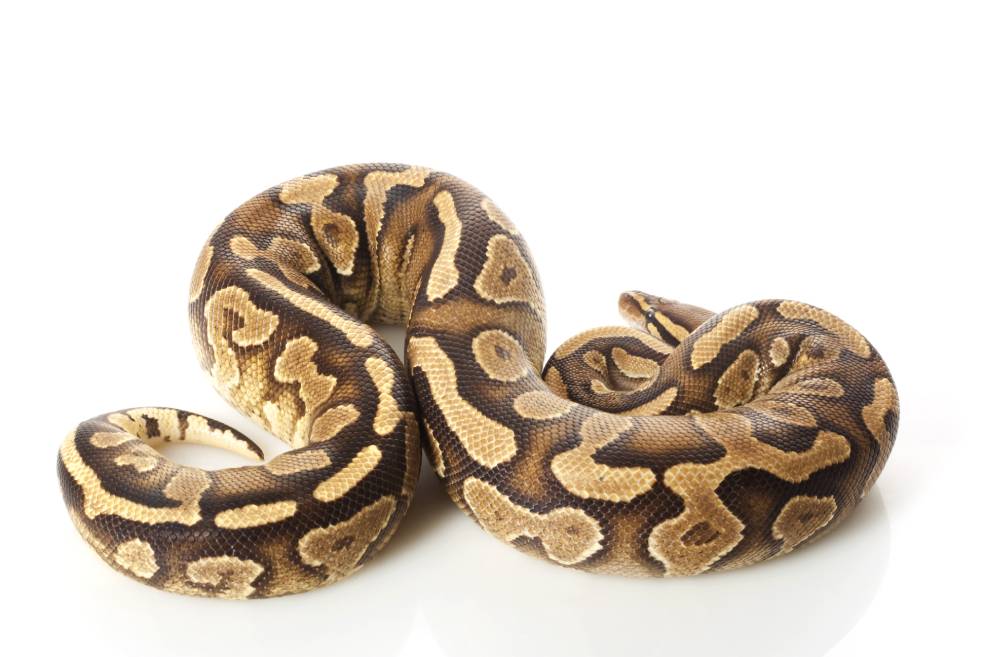
There has been much controversy surrounding the continued breeding of Spider morphs over concerns about the quality of life related to the associated wobble neurological disorder. There have been many discussions across the reptile community over this controversy resulting in many petitions to outlaw the breeding of these animals popping up.
There are some that believe the quality of life is unaffected by the wobble, and the snakes can thrive and live long healthy lives. Others believe it to be cruel to continue breeding animals that have a known genetic neurological condition that cannot be cured or avoided in any specimen.
The International Herpetological Society, or IHS, prohibited the sale of Spider Ball Pythons at their shows as of 2018. But to this date, there are still no laws against the breeding of Spider Ball Pythons, and it still remains a topic of discussion.
9. They Are Among the Most Common & Inexpensive Morphs
It’s no surprise that Spider Ball Pythons are common considering they have been part of the reptile hobby since 1999. At this point, they are now considered one of the most common morphs on the market and can be easily found.
Their price tag is nowhere near what it used to be, either. These snakes used to cost thousands of dollars, but a typical Spider with no other traits can now be found between $50 and $300 depending on their age, size, and sex.
10. The Wobble May Influence a Spider Morph’s Care Regimen
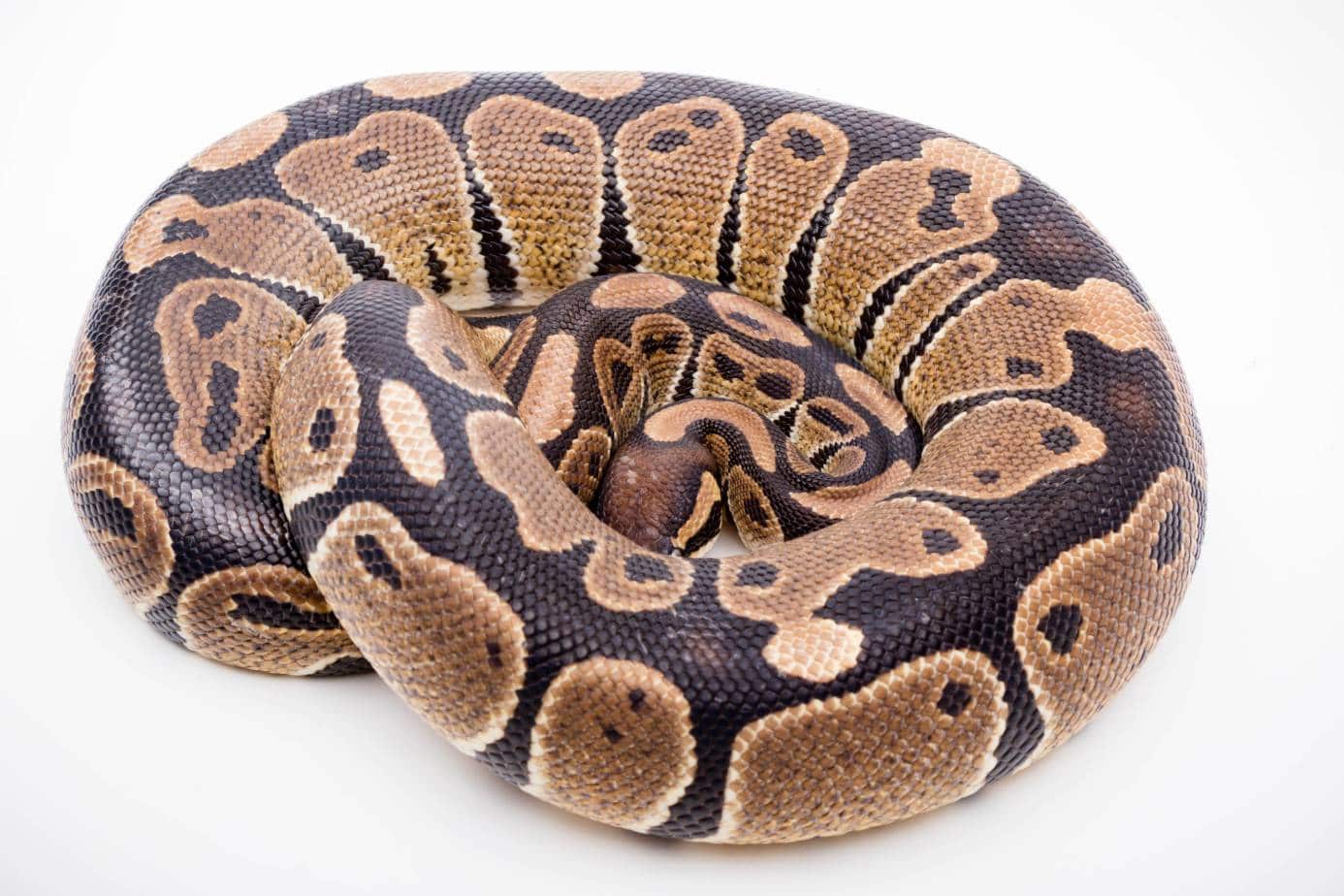
Aside from the scaleless varieties that require some more unique care needs, the care and husbandry practices for Ball Pythons are the same across the board, regardless of morph. There is a chance, however, that certain Spider morphs may need some special care depending on the severity of their wobble.
Occasionally, the wobble could result in issues with striking food. There are plenty of reasons why we don’t recommend feeding live prey to any snake, but for snakes with a wobble, frozen thawed may be the only way to go. You may also need to minimize handling to prevent any stress, which can affect the severity of the wobble.
Conclusion
The Spider Ball Python morph was introduced to the pet trade in 1999 by New England Reptile Distributors after the first specimen was imported from Africa. This specific genetic mutation results in a unique, thin puzzle pattern and has been used to create a wide variety of other morphs.
This same mutation is also responsible for a central nervous system disorder known as the wobble, which is present to some degree, in every snake with the gene. There is a lot of controversy surrounding the Spider morph, but they are currently one of the most common and least expensive in the reptile hobby.
Featured Image Credit: fivespots, Shutterstock


